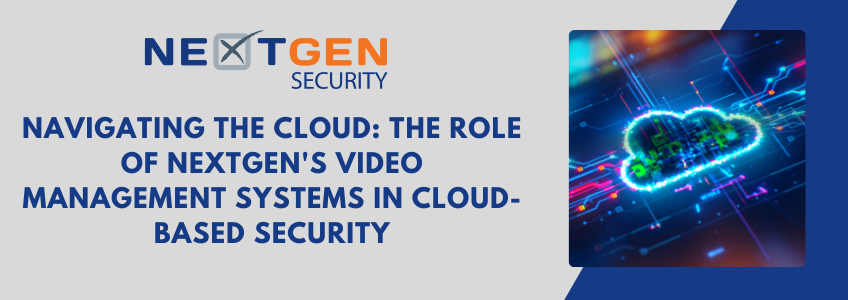End users across so many sectors are migrating their video management systems (VMS) to the cloud. And with good reason. Cloud-based VMS translates into cost savings, enhanced availability of video data, particularly for mobile users, and a lot of system flexibility. In addition, cloud VMS affords a much higher level of cybersecurity for video data.
The role that VMS plays in a video surveillance system is vitally important in that it gathers and stores video footage from all connected security cameras. This video can be viewed live or reviewed later for investigative purposes.
In this blog, we will explore the benefits that cloud-based video management systems can provide.
Budgets can often be a pain point for end users, making cloud video management solutions especially attractive as they are affordable and flexible. Concerns over having sufficient data storage onsite are no longer an issue. Being able to finally say good-bye to the expense of an onsite server or network storage is another huge benefit of migrating VMS to the cloud, and the worries that data could be compromised due to power or hardware outages are also eliminated.
While some still fear that new network cameras are needed for a cloud-based solution, the reality is that video from existing analog cameras can easily be brought to the cloud with no video quality loss.
It doesn’t matter if your network is in place at one single location or if you have cameras across many facilities – video from individual site systems can all be brought together into a single cloud VMS application. This enables authorized personnel to view footage in a centralized, user-friendly application.
Costs can be easily controlled because cloud-based VMS is a paid subscription, and to echo what the Liberty Mutual slogan says, you only pay for what you need!
End users have varying footage retention requirements, ranging from, say a short 30-day period to 90 days and beyond, depending on the industry. Cloud computing technology enables the VMS to automatically scale up and down its use of computing and storage resources, setting pricing that’s based on average use. Onsite VMS hardware processing and storage capacities, on the other hand, must be prepared to handle peak demand regardless of fluctuations in demand.
As increasingly more end users have made the educated decision to migrate their VMS to the cloud, initial end user fears that their video could be vulnerable when no longer kept on their premises but rather, reside on other servers remotely, have been largely put to rest. The reality is that cyber security and data protection are top of mind for cloud service providers. Significant investments have been made in encryption protections, and video data is encrypted immediately as it is being captured at the camera.
As CrowdStrike, a global cybersecurity leader defines, “Cloud encryption is the process of transforming data from its original plain text format to an unreadable format, such as ciphertext, before it is transferred to and stored in the cloud. As with any form of data encryption, cloud encryption renders the information indecipherable and therefore useless without the encryption keys. This applies even if the data is lost, stolen, or shared with an unauthorized user. Encryption is regarded as one of the most effective components within the organization’s cybersecurity strategy. In addition to protecting the data itself from misuse, cloud encryption also addresses other important security issues, including: Compliance with regulatory standards regarding data privacy and protection, enhanced protection against unauthorized data access from other public cloud tenants, and, in select cases, absolving the organization of the need to disclose breaches or other security events.”
The numerous security and cost saving benefits of cloud-based VMS are indisputable. We at NextGen have the experience and expertise to help your organization migrate to cloud-based VMS and enjoy the many benefits it provides. Call on us today to learn more.

